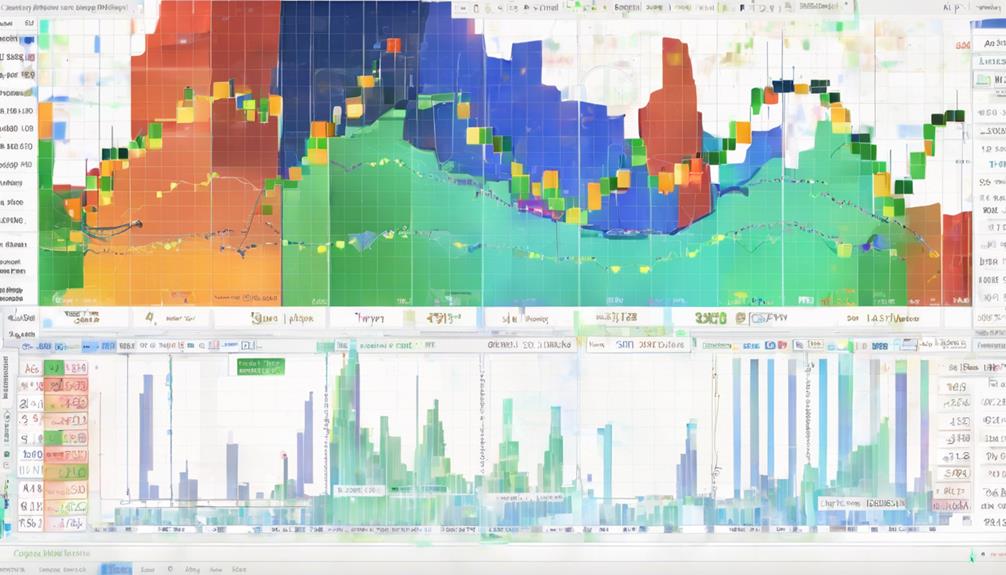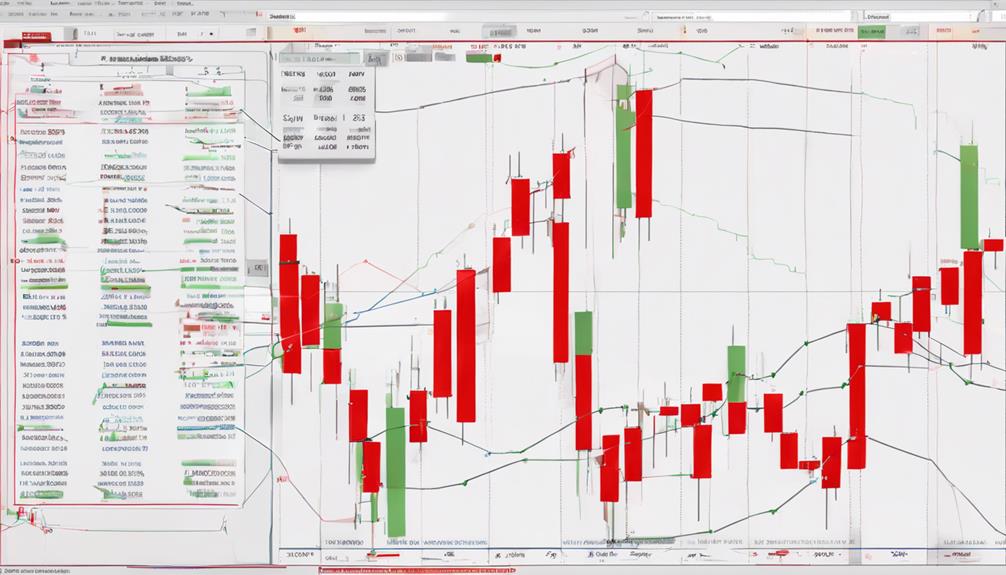Pivot points in trading have long intrigued both novice and seasoned traders alike due to their ability to provide valuable insights into market dynamics. The calculation method of pivot points is rooted in historical price data, offering a glimpse into potential future price movements.
Understanding how to interpret these levels can significantly enhance one's trading strategy by pinpointing key entry and exit points. However, the real challenge lies in effectively integrating pivot points with other technical indicators and adapting them to ever-changing market conditions.
By unraveling the mystery behind pivot points, traders can unlock a valuable tool that may hold the key to improved trading performance.
Understanding Pivot Point Calculation
The calculation of pivot points in trading involves deriving key levels based on the previous day's high, low, and closing prices, providing traders with essential reference points for market analysis. The central pivot point is a crucial level calculated as the average of the high, low, and close prices, serving as a significant reference point for traders. These pivot points act as key levels of support and resistance, helping traders identify potential entry and exit points in the market. By understanding these primary support and resistance levels, traders can gauge market trends and make informed decisions on their trading strategies.
Additionally, pivot points offer insights into market sentiment; trading above the pivot point indicates a bullish market, while trading below suggests a bearish market sentiment. Various types of pivot points, including Standard, Fibonacci, Woodie's, Camarilla, and DeMark, provide traders with different calculations and perspectives to analyze market movements effectively.
Importance of Pivot Points in Trading

Pivotal in trading analysis, pivot points serve as indispensable markers for identifying critical support and resistance levels based on price action. Traders heavily rely on pivot points for various reasons:
- Establishing Entry and Exit Points: Pivot points help traders determine optimal levels to enter or exit trades, enhancing the precision of their trading decisions.
- Setting Stop-Loss Levels: Incorporating pivot points enables traders to set effective stop-loss levels, thus managing risks efficiently within their trading strategies.
- Identifying Key Levels: Pivot points act as key reference points in technical analysis, aiding traders in recognizing significant price levels where market behavior may change.
Applying Pivot Points in Decision Making

Utilizing pivot points effectively in decision-making processes is crucial for traders seeking to optimize their trading strategies and enhance their overall market analysis. Pivot points serve as valuable tools in identifying key support and resistance levels, aiding traders in making informed decisions on entry and exit points based on the previous day's price action.
By incorporating pivot points into technical analysis, traders can assess market sentiment and anticipate potential price reversals across different timeframes. Understanding pivot points enables traders to set profit targets accurately and recognize emerging market trends promptly.
Moreover, integrating pivot points into trading strategies enhances decision-making by providing objective price reference levels, thereby increasing the efficacy of trading approaches. Ultimately, the strategic application of pivot points empowers traders to navigate the complexities of the market with greater precision and confidence, contributing to more successful trading outcomes.
Benefits of Utilizing Pivot Points

When integrating pivot points into trading strategies, traders gain a strategic advantage by leveraging key support and resistance levels for informed decision-making. Pivot points offer several benefits that can enhance a trader's overall trading approach:
- Identification of Key Support and Resistance Levels: Pivot points help traders identify crucial levels where the price may experience a significant shift, aiding in determining entry and exit points.
- Assistance in Recognizing Potential Reversals: By using pivot points, traders can anticipate potential market reversals, allowing them to adjust their trading strategy accordingly.
- Effective Risk Management and Profit Target Setting: Pivot points assist in setting realistic profit targets and defining risk management strategies, enabling traders to optimize their risk-reward ratio effectively.
Strategies for Effective Pivot Point Trading

Strategies incorporating pivot points in trading encompass tactical methods for identifying key support and resistance levels to optimize entry and exit decisions. By utilizing pivot points, traders can pinpoint potential price reversals and establish profit targets within their trades.
These strategies are further enhanced when pivot points are combined with other technical indicators, providing a more comprehensive analysis for making informed trading decisions. Pivot point trading strategies are versatile and can be applied across different time frames, allowing traders to capture various market trends effectively.
To ensure accuracy in trades, it is essential to integrate pivot analysis with price action confirmation, enabling traders to validate their trade setups before execution. Ultimately, mastering effective pivot point trading involves a strategic approach that considers both the numerical levels provided by pivot points and the qualitative insights derived from price action and technical indicators.
What Are the Different Strategies for Using Pivot Points in Trading?
Pivot points play an essential role in trading strategies. Traders often use pivot points to identify potential support and resistance levels, as well as to determine entry and exit points for their trades. Common strategies include using pivot points to inform stop-loss and take-profit levels, and to gauge overall market sentiment.
Frequently Asked Questions
Do Professional Traders Use Pivot Points?
Professional traders frequently utilize pivot points as crucial support and resistance levels in their trading strategies. These points aid in identifying potential price reversals and setting profit targets efficiently, enhancing overall trading performance and accuracy.
What Is the Success Rate of Pivot Point Trading?
Pivot point trading success rates vary, contingent on the trader's adeptness in amalgamating pivot points with complementary indicators. While studies suggest efficacy within a comprehensive plan, success escalates with adeptness in identifying support and resistance levels precisely.
What Is the Most Accurate Pivot Point Indicator?
The most accurate pivot point indicator varies based on individual trading strategies and preferences. Common options include Standard, Fibonacci, Camarilla, Woodie's, and DeMark. Traders experiment to align indicators with their style and market conditions effectively.
What Is the Best Pivot Point Trading Strategy?
The best pivot point trading strategy involves identifying key support and resistance levels to determine optimal entry and exit points. Utilize pivot points in conjunction with other technical indicators for confirmation, and implement risk management techniques for trade protection.
Conclusion
In conclusion, pivot points play a crucial role in trading by providing key levels of support and resistance based on previous price data.
By integrating pivot points with other technical indicators and adapting them to market conditions, traders can make more informed decisions and improve their overall trading strategy.
Like a compass guiding a ship through turbulent waters, pivot points serve as valuable tools to navigate the complexities of the financial markets.


